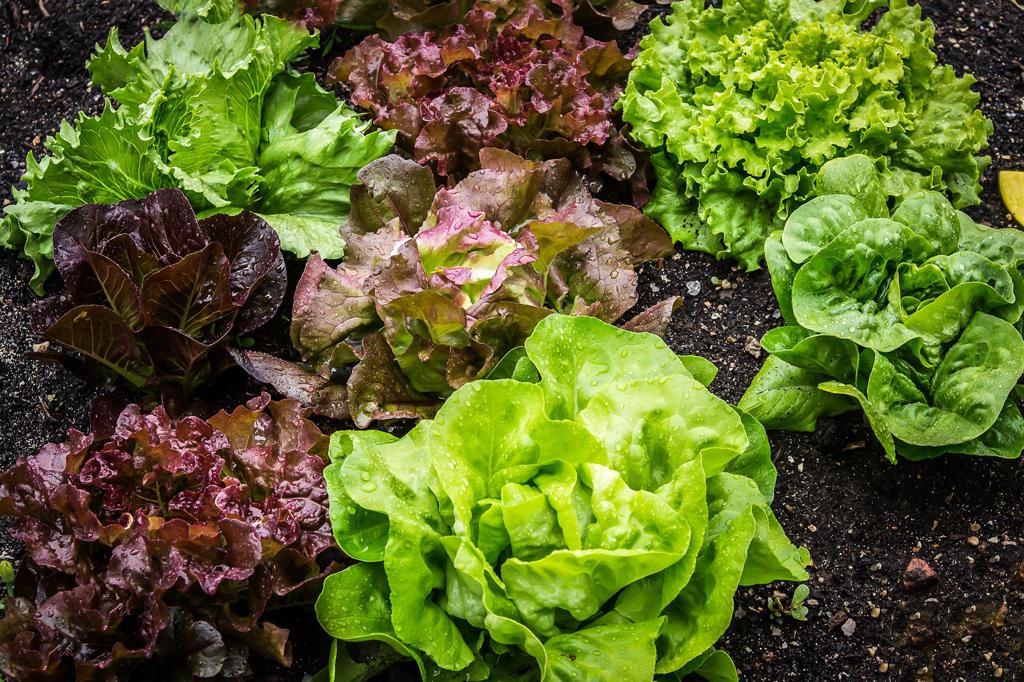
You can grow a marvellous range of salad plants with very little difficulty. They’re the perfect thing to grow as a ‘cut-and-come-again’ crop – the idea is that you sow a few seeds every few days or so, you snip off leaves as you want them when they’re young, small and fresh, and you keep doing that all summer!
I want to say right at the start that when I say ‘salad crops’, I won’t be including celery (which can be very tricksy), cucumbers (which would need a whole blog to themselves), tomatoes , carrots or pea shoots (which we have dealt with in other articles) .
Peppers and chillies need a long growing season in order to fruit well, so are best sown with heat in January or February. If you are wanting to start growing them later, it’s probably better to buy them as small plugs or plants.
My principal focus today is on those lovely leafy or bulbous things that grow quickly and happily in containers of all sorts – hanging-baskets, patio pots, raised planters….you name it. Of course, they can also be grown in greenhouses and conservatories, or outside once no more frost is expected. Lettuces, of course, of all kinds and colours, corn salad, rocket, baby spinach, mustard and cress, as well as beetroot, spring onions and radishes. And don’t forget edible flowers too – the peppery leaves and flowers of nasturtiums, marigold petals, viola flowers……. All are generally easy and satisfying to grow.
1.Seed-Sowing
You can sow salad indoors in early April in pots on a bright window-sill for early crops, or in April and May outdoors (leave it till mid-late April if you live in the north) in containers, Gro-bags, raised beds, hanging-baskets – almost anything really as long as it has drainage holes.
Sprinkle your salad seeds thinly over the surface of moist, firmed compost – some, like lettuce seed, is very fine and that will only need a very thin layer of compost, vermiculite or fine grit over the top; others like beetroot are a bit bigger and need a little more – about 1″ (2.5 cm). (A word about beetroot – if you soak the seed for a few hours in water before sowing, the germination rate should be better and faster.)
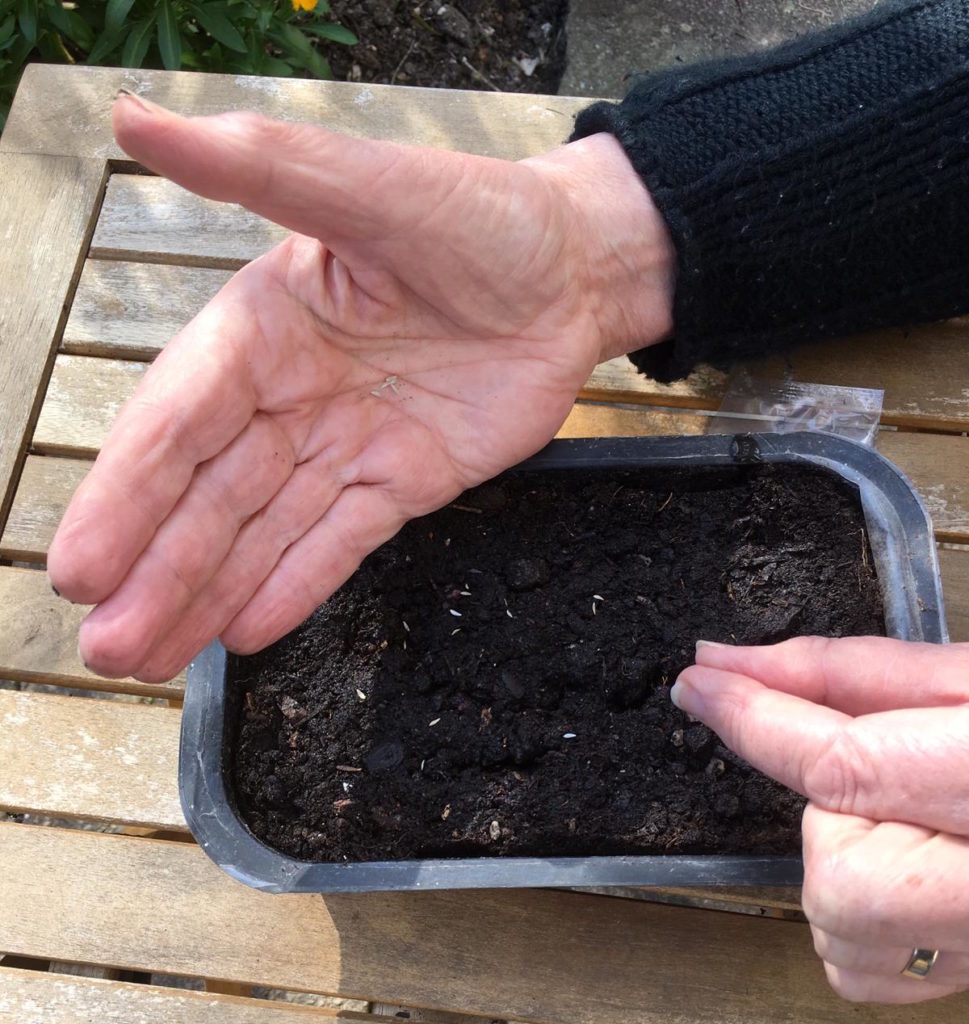
The chosen position for your seed-growing should be bright and warm, but not too hot. Keep the compost/soil just moist while the seeds germinate, which should only be a matter of 10 days or so (it is VERY quick in the case of radishes!) If the soil is too wet, or you’ve sown the seed thickly, you may get problems with them all suddenly collapsing – ‘damping off’. If that starts to happen, salvage what seedlings you can and tuck them carefully into a different pot of compost, sow some more seed elsewhere and start again – it’s just a small setback, and I promise you, every gardener’s life is littered with those…
A bit of experience talking here (!) – If you are sowing your seeds where there are likely to be weed seeds germinating as well, like the veg patch for instance, don’t imagine they would look nice, scattered all over the place. I promise you that baby salad leaves look practically identical to baby weeds, and it becomes a nightmare to sort out! So make tiny shallow rows with a trowel, a dibber or even a biro, and sow your seeds into those, before you cover them over. You’ll easily be able to weed in between the rows when needed.
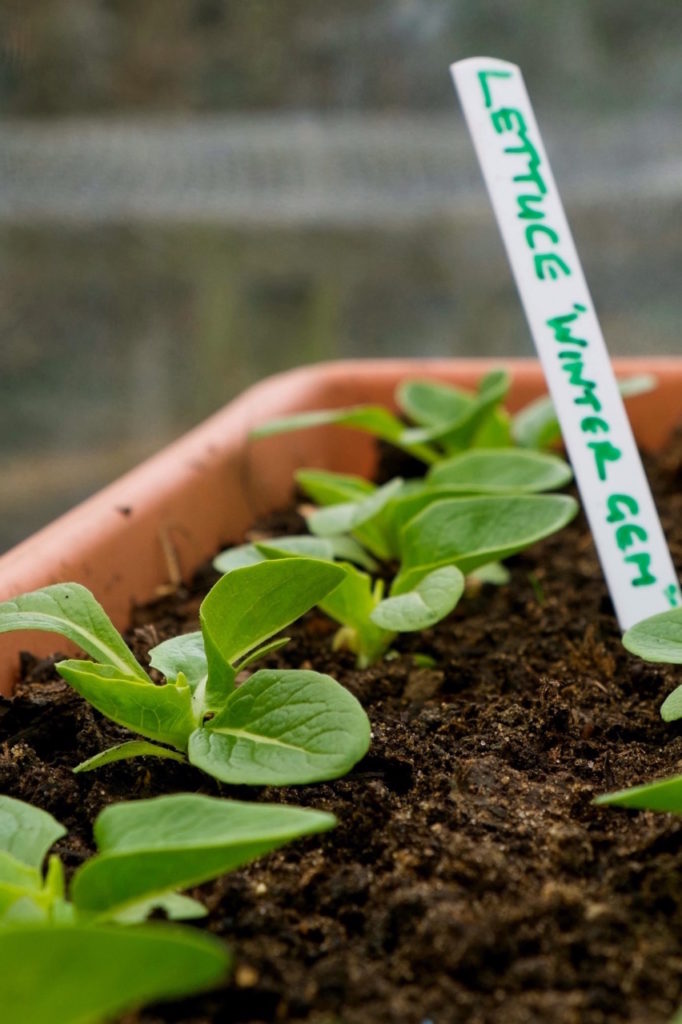
Radishes are great in pots too, but hate being too hot – the best technique here is to sow them quite thinly outside in containers of fertilised compost about two weeks before your last frost is expected. Choose a sheltered sunny place. Keep the compost moist at all times, but not soaking – watering every other day should be okay. When they come up, thin them to about 2″ between each plant.
Remember that the plan is to keep your salad crops coming, so make a note to sow more seeds each week for a month or so. Another technique that works well with these plants is ‘inter-planting’ – you can pop these fast- growing things in between all sorts of other crops – radishes amongst the tatties, lettuces among the tomatoes, nasturtiums with the broad beans (an added advantage here is that they might lure the black fly away from the bean plants!) This idea doesn’t work well in the onion patch, which like things a bit drier than most salad plants apart from anything else, but otherwise a glorious mixture of growing crops works well, and is a great way of using all available space.
2. Caring for the Crop
Once the little plants are coming up and are big enough to get hold of, it’s a good idea to ‘thin’ them – pull out ones that are growing very closely together so that the remaining ones can develop better. Here’s an admission – thinning is one of my most hated jobs in all of gardening! It feels so murderously wasteful to chuck away all those little seedlings full of life and keen to grow, and I always curse myself for sowing them too thickly.
Keep the soil moist around your salads, but none of them need masses of fertiliser. If the plants become dry, that is a common cause of ‘bolting’ – shooting up to flower – and that makes them much less palatable, with bitter leaves, etc. Cold weather can also trigger this. Flowering and setting seed is a natural thing for a plant to do, of course, and your job is to deter them from doing this as long as possible. Some plants just prefer being sown later in the summer, like mizuna and pak choi, and there are bolt-resistant varieties of some plants available, like beetroot ‘Boltardy’. Sowing more seeds at regular intervals is your best insurance against losing a whole crop to climatic conditions. By the way, beetroot can be super-good for you! – have a look at an article by the naturopress on the subject – link is at the bottom.
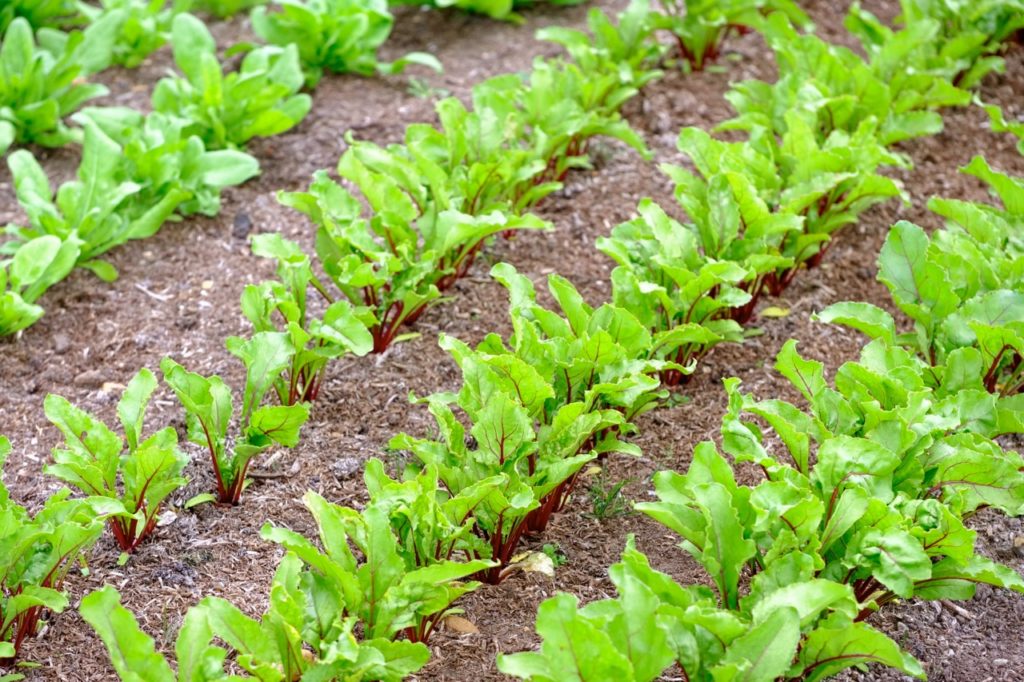
Do watch out for slugs and snails – they LOVE this stuff! Organic slug bait, beer traps, Sluggone mats, coffee grounds, creeping round late at night with a torch – all of these work pretty well. Please don’t use any product against these beasties that doesn’t say that it’s safe around cats, dogs, birds etc – it is critically important that we protect our pets and bio-diversity.
3. Harvesting
You can be harvesting baby leaves really soon with these salad things – as soon as they look like the leaves you get in a supermarket bag of salad, snip some off for a lovely fresh-tasting lunch, and as long as you don’t damage the central growing point of the plant or take off ALL its leaves, it will keep growing. Young beetroot and radish leaves are also tasty. You should get at least 3 cuts off a plant, before it’s past its best, and by that time, you should have more young plants coming along.
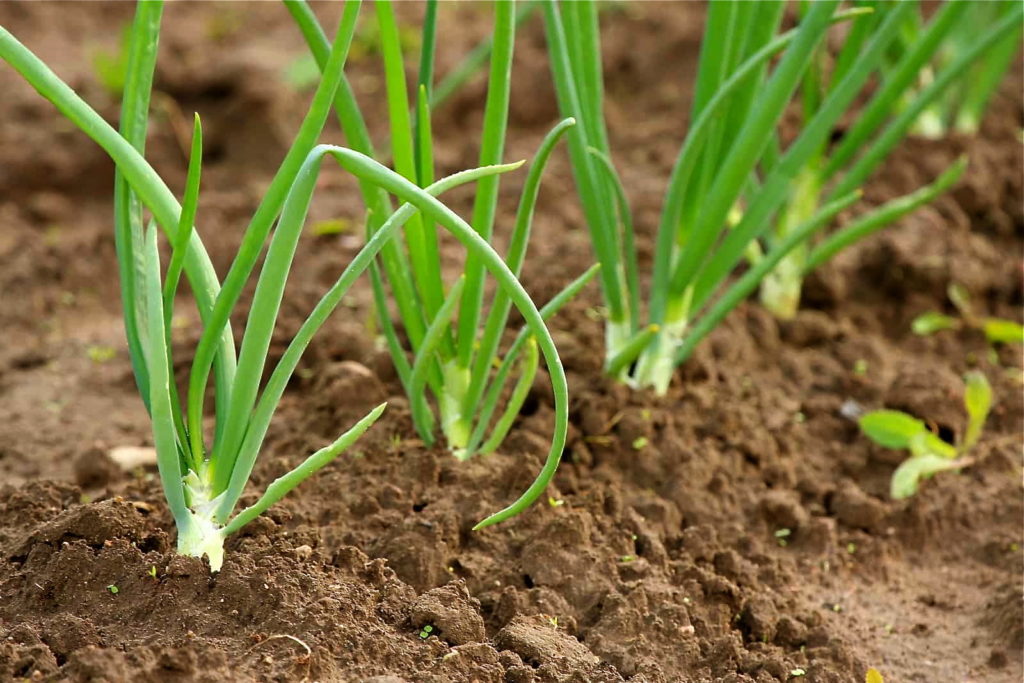
Lettuces that ‘heart’ up, like ‘Iceberg’ and ‘Little Gem’, take about 3 months from sowing, but you can start picking leaves from ‘Cut-and-come-again’ (loose-leaf) varieties like ‘Salad Bowl’ from about 7 weeks. Leaf mixes will also be ready at about 7 weeks, radishes will be 3-6 weeks, beetroot about 12 weeks.
Radishes that have been growing happily in pots or rows in the veg plot can be harvested in as little as 3-4 weeks from sowing!
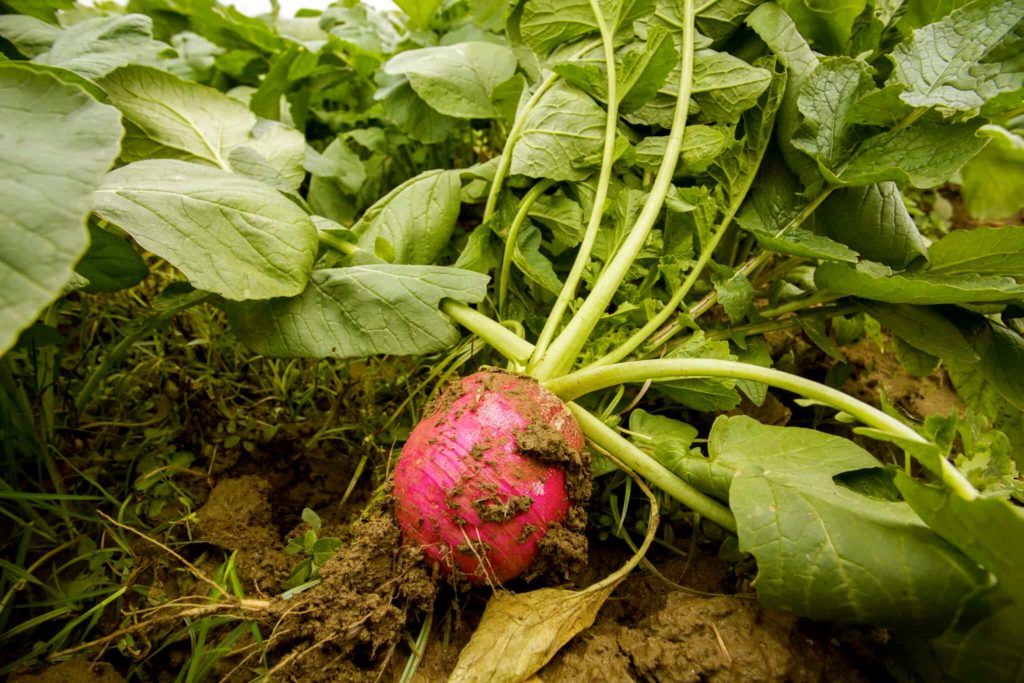
I hope I’ve tempted you to have a go with salad crops – fun to grow, pretty to look at, and scrumptious to eat!
Here’s the link to the Naturopress article
If you missed the first six posts in our Beginners Veg series, you can read them here:
3. Broad beans
5. Dwarf runner beans, peas and carrots
6.You say tomatoes – I say terrific
You can have the whole Beginner’s veg growing campaign at your fingertips by getting this, our handy pocket-sized book at our online shop here.
NB: If you’re new to The3Growbags, we are three sisters (Laura, Caroline and me, Elaine) who write about gardening once a week and enjoy a good laugh. We’d love you to join us by entering your email address here. We’ll email you every Saturday.
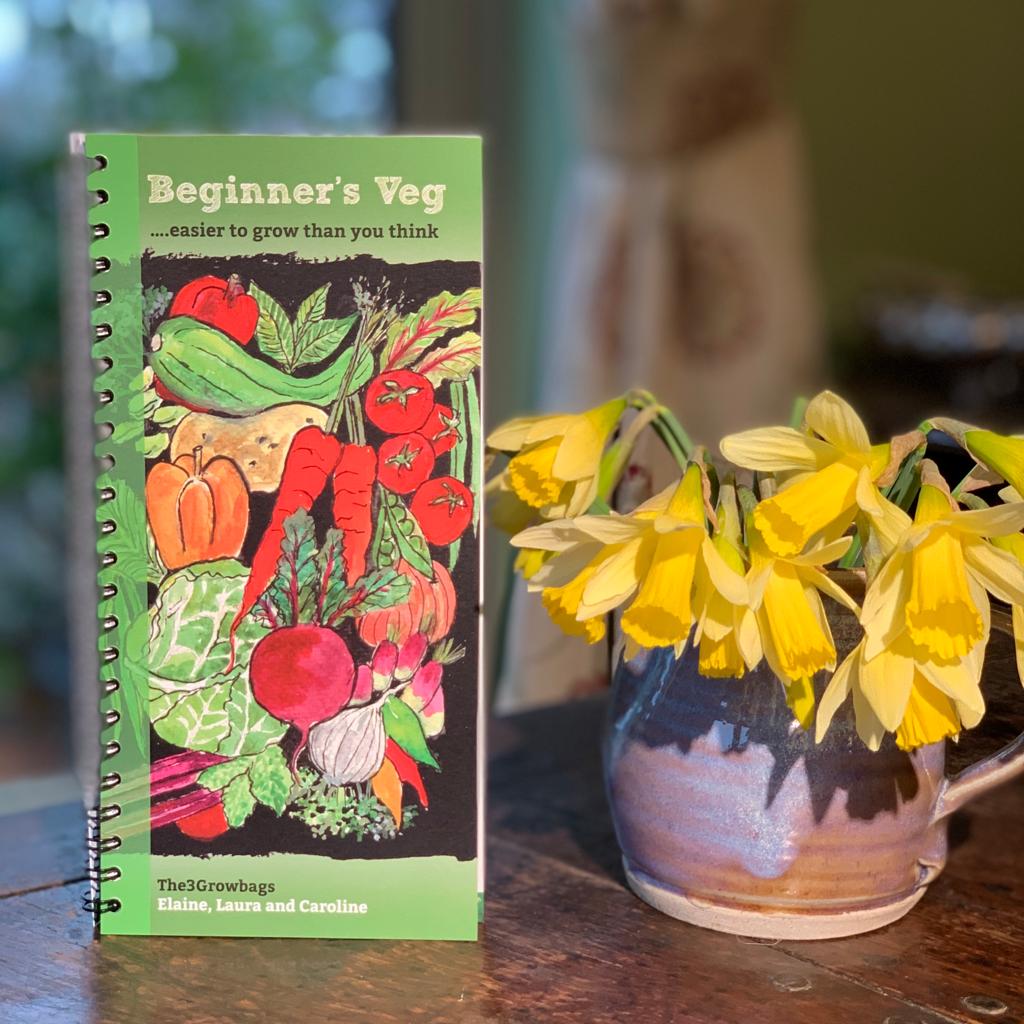
You can have the whole veg growing campaign at your fingertips by getting this, our handy pocket-sized book at our online shop here.
